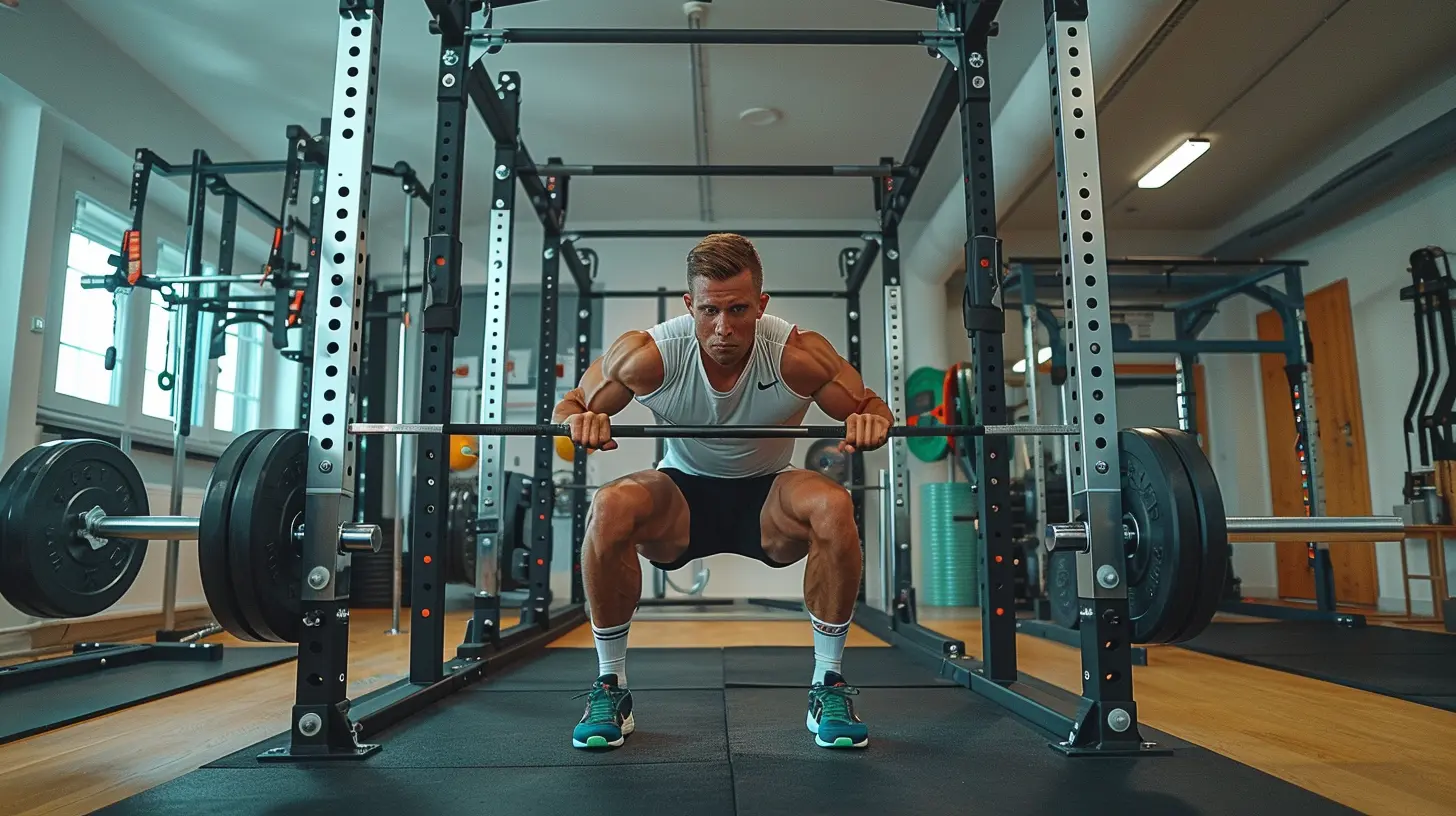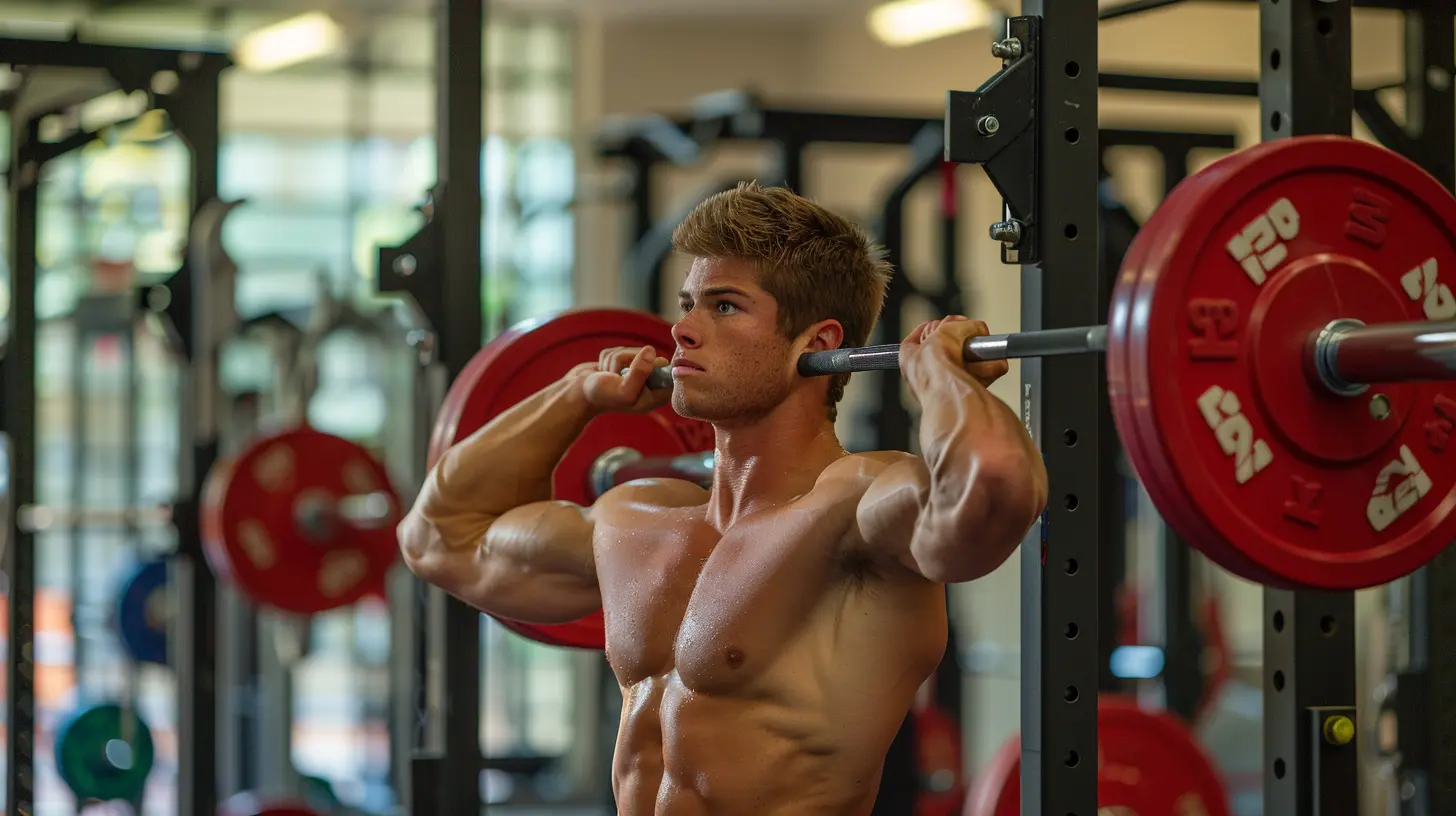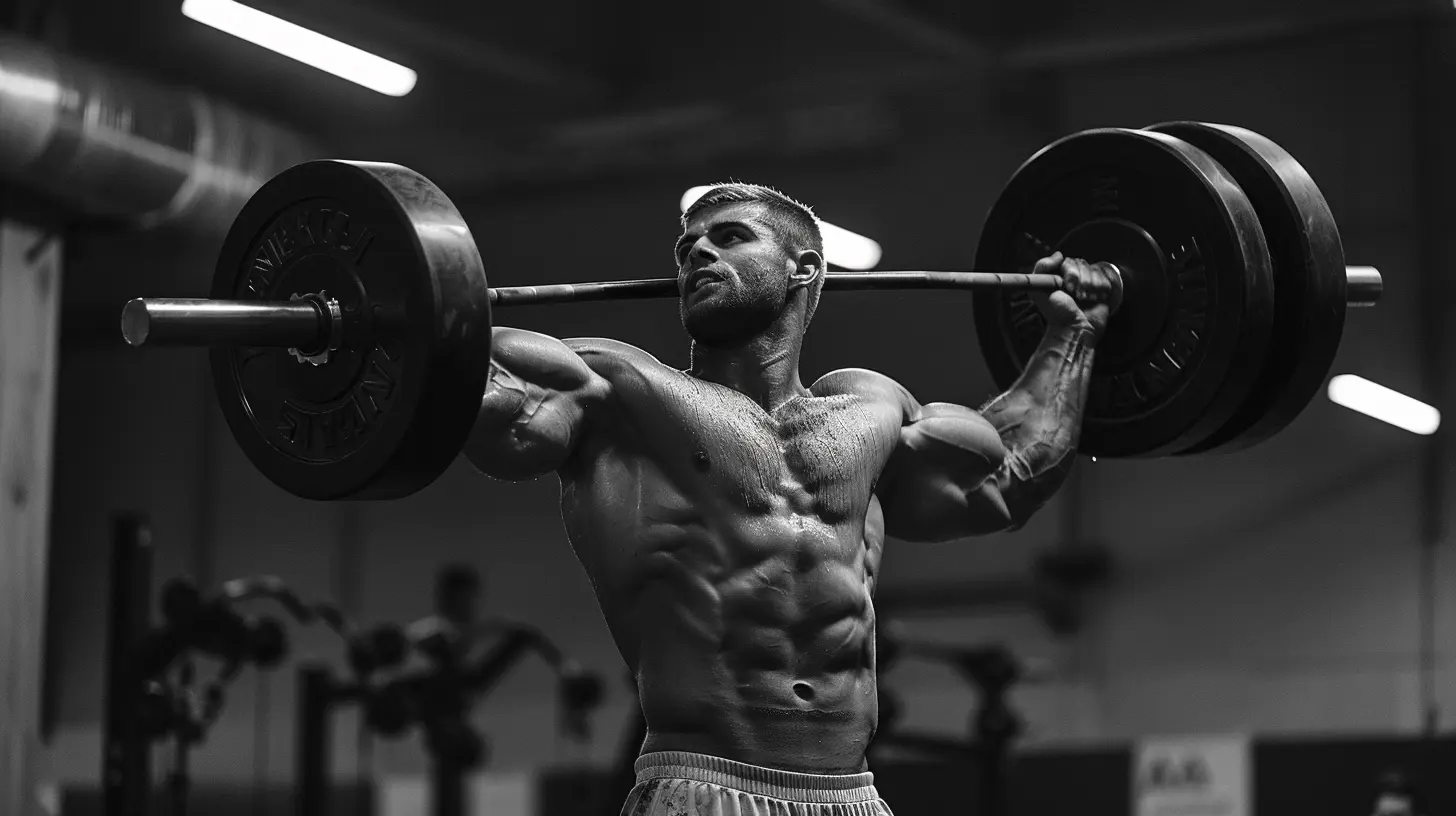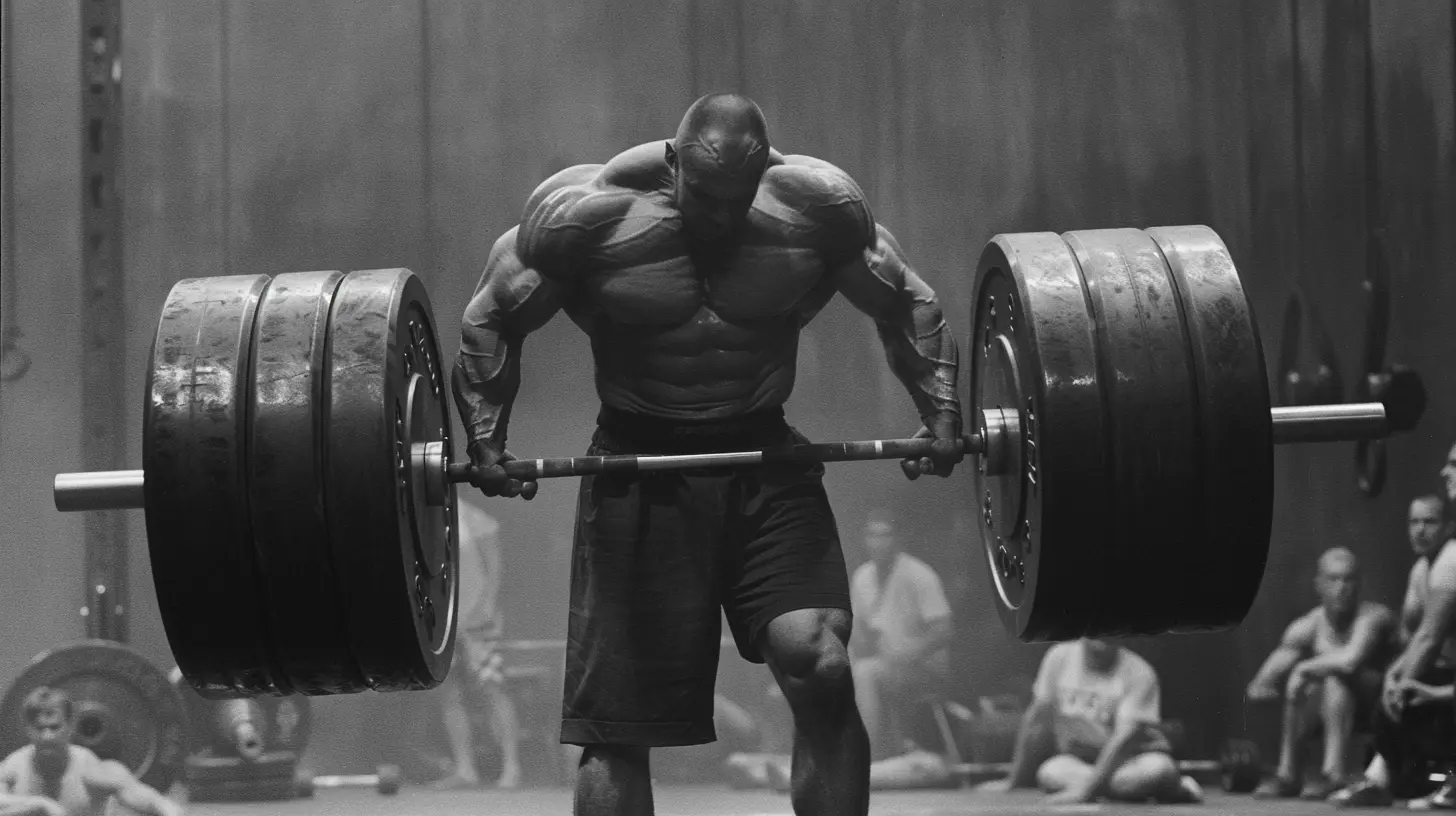The Role of Compound Movements in Building Full-Body Strength
26 November 2024
When it comes to fitness, we all want to get the most bang for our buck, right? Whether you're a seasoned lifter or just starting your strength training journey, you've probably heard of compound movements. These bad boys are the bread and butter of building full-body strength, and trust me, they're worth every drop of sweat. In this article, we’ll dive into why compound exercises should be at the core of your workout routine, how they work, and the benefits they bring to the table.

What Are Compound Movements?
Before we go any further, let's break down what compound movements actually are. Simply put, compound exercises are multi-joint movements that engage multiple muscle groups at the same time. Think of them as the multitaskers of the fitness world. Instead of isolating one muscle, like bicep curls do, compound movements get several muscles working together.For example, when you perform a squat, you're not just working your quads. Your hamstrings, glutes, calves, and even your core are all involved. It's like having the entire team on the field at once, rather than just one star player.
How Are They Different From Isolation Movements?
In contrast, isolation exercises target a specific muscle group. If compound movements are like a 5-in-1 multitool, isolation exercises are the specialized screwdriver that only fits one type of screw. For instance, a leg extension machine isolates your quadriceps, but doesn’t do much for any other part of your body.Both compound and isolation exercises have their place in a well-rounded fitness program, but if you're looking to build full-body strength, compound movements are where it's at.

Why Compound Movements Are Essential for Full-Body Strength
1. They Recruit More Muscle Fibers
Let’s get real for a second: if you want to build strength, you need to challenge your muscles. Compound exercises do just that by engaging multiple muscle groups at once, which recruits more muscle fibers. The more fibers you activate, the stronger you'll become.Take the deadlift, for example. It’s not just about your back or your legs; it's a full-body powerhouse that recruits your hamstrings, glutes, lats, traps, and even your grip strength. In fact, deadlifts are often referred to as the "king of lifts" for a reason. The more muscles you can target in one move, the more strength you'll build overall.
2. They Mimic Real-Life Movements
Ever tried lifting a heavy box off the floor? That’s essentially a deadlift. Compound movements translate to real-life strength because they mimic the natural movements your body makes in everyday life. Whether you're carrying groceries, climbing stairs, or picking up your kid, compound movements prepare your body to handle these tasks with ease.Isolation exercises, on the other hand, don't offer the same kind of functional strength. Sure, you might have a killer bicep pump, but when it comes to moving that couch across the living room? Compound lifts win every time.
3. They Boost Hormonal Response
Here’s a little secret: compound movements don’t just build muscle; they also give your hormones a boost. When you perform compound lifts, your body releases more anabolic hormones like testosterone and growth hormone. These hormones are crucial for muscle growth and recovery.Isolation exercises don’t have the same impact on hormone production because they don’t stress the body in the same way. Compound movements, especially heavy ones like squats and deadlifts, send a signal to your body that says, "Hey, we need to grow stronger!"
4. They Burn More Calories
If you're trying to get lean while also building strength, compound movements are your best friend. Since they require more energy, they burn more calories compared to isolation exercises. This makes them incredibly efficient for fat loss and muscle gain.When you engage large muscle groups, your body needs to supply more oxygen, which means your heart rate increases. This turns your strength training session into a cardio workout, killing two birds with one stone.
5. They Improve Coordination and Balance
Ever notice how performing a squat or deadlift requires more than just brute strength? You also need balance, coordination, and stability to execute the move properly. Compound movements force your muscles to work together in harmony, which improves your overall body awareness and coordination.This is especially important for athletes or anyone looking to improve their performance in sports. Whether you're sprinting, jumping, or changing directions quickly, compound movements will help you stay balanced and agile.

The Best Compound Movements for Full-Body Strength
Now that you know why compound exercises are so important, let’s look at some of the best compound movements you can incorporate into your routine. These exercises are staples in any strength training program and will help you build functional, full-body power.1. Squats
If there’s one exercise that should be in every strength program, it's the squat. Squats primarily target your quads, glutes, and hamstrings, but they also engage your core, lower back, and even your calves. Plus, they have endless variations — from front squats to goblet squats to Bulgarian split squats.Squats also have a huge carryover to daily activities. Whether you’re getting out of a chair or climbing stairs, your squat strength will help you move more efficiently.
2. Deadlifts
As I mentioned earlier, deadlifts are often referred to as the "king of lifts." They’re a total-body exercise that targets everything from your hamstrings to your traps. Deadlifts are excellent for building posterior chain strength, which is crucial for maintaining a healthy posture and preventing injuries.There are several variations of deadlifts, including sumo deadlifts, Romanian deadlifts, and trap bar deadlifts. Each variation targets slightly different muscles, so feel free to mix things up to keep your body guessing.
3. Bench Press
No strength training program is complete without the bench press. This classic compound movement targets your chest, shoulders, and triceps, but it also engages your core and stabilizer muscles. And if you think the bench press is just for bodybuilders, think again. It’s one of the best ways to build upper body strength that translates to sports and everyday activities.4. Pull-Ups
Pull-ups are a fantastic way to build upper body strength, especially in your lats, biceps, and forearms. They also activate your core and even your lower back to a certain extent. If you can’t do a full pull-up yet, don’t worry. You can start with assisted pull-ups or use resistance bands to build up your strength.5. Overhead Press
The overhead press (also known as the shoulder press) is another great compound movement for building upper body strength. It primarily targets your shoulders, but your triceps, upper chest, and core also get involved. This is an excellent exercise for anyone looking to improve their upper body power and stability.6. Rows
Whether you're doing barbell rows, dumbbell rows, or seated cable rows, this compound movement is essential for building a strong back. Rows target your lats, traps, rhomboids, and biceps, making them perfect for improving posture and balance.
How to Incorporate Compound Movements Into Your Routine
So, how do you integrate these powerhouse exercises into your workout routine? Here are a few ways:1. Full-Body Workouts
One of the best ways to incorporate compound movements into your routine is by doing full-body workouts. This allows you to hit multiple muscle groups in one session, maximizing efficiency.For example, a full-body workout might include:
- Squats
- Deadlifts
- Bench Press
- Pull-Ups
- Overhead Press
2. Upper/Lower Split
If you prefer a split workout routine, you could do an upper/lower body split. On your upper body days, focus on compound movements like bench presses, rows, and overhead presses. On your lower body days, hit exercises like squats, deadlifts, and lunges.3. Push/Pull/Legs Split
Another popular option is the push/pull/legs split.- Push days focus on exercises like bench presses and overhead presses.
- Pull days include movements like rows and pull-ups.
- Leg days are all about squats, deadlifts, and lunges.
Conclusion: Compound Movements Are the Key to Full-Body Strength
If you want to build real, functional strength that translates to everyday life, compound movements are the way to go. They recruit more muscle fibers, mimic real-life movements, improve coordination, and burn more calories. Plus, they give your hormones a much-needed boost, helping you build muscle faster.Whether you're just starting out or you're a seasoned lifter, you can’t go wrong by making compound exercises the foundation of your workout routine. Squats, deadlifts, bench presses, and pull-ups are just a few examples of the exercises that will help you build full-body strength.
So, next time you hit the gym, skip the endless bicep curls and give these compound movements a try. Your body will thank you.
all images in this post were generated using AI tools
Category:
Strength TrainingAuthor:

Easton Simmons
Discussion
rate this article
21 comments
Fatima Ross
“Who needs isolation? Yawn!”
April 7, 2025 at 8:40 PM

Easton Simmons
Isolation exercises have their place, but compound movements are key for efficiently building overall strength and functionality.
Remington McClintock
Compound movements: because why lift one weight when you can awkwardly lift three and make every gym visit feel like an Olympic event? Let’s go!
February 7, 2025 at 11:51 AM

Easton Simmons
Thanks for the humor! Compound movements are indeed a challenging yet effective way to maximize strength and efficiency in your workouts. Let's embrace the Olympic spirit!
Nymira Young
Compound movements efficiently target multiple muscle groups, enhancing overall strength and functional performance essential for athletic success.
January 28, 2025 at 8:58 PM

Easton Simmons
Absolutely! Compound movements are key for maximizing strength and improving functional performance, making them vital for athletes.
Elora Hamilton
Great insights! Compound movements are essential for building strength and efficiency. They truly engage multiple muscle groups, making workouts more effective. Keep up the fantastic work!
January 24, 2025 at 1:38 PM

Easton Simmons
Thank you! I appreciate your feedback and glad you found the insights valuable!
Marie Velez
Great insights on strength training!
January 19, 2025 at 5:11 AM

Easton Simmons
Thank you! I'm glad you found the insights valuable!
Otto Vance
Great insights! Embracing compound movements is key to maximizing strength and efficiency in any training regimen. Keep inspiring others!
January 11, 2025 at 5:27 AM

Easton Simmons
Thank you! I'm glad you found the insights valuable. Embracing compound movements truly makes a significant difference in training effectiveness.
Zayla McEvoy
Excited to learn more techniques!
January 5, 2025 at 9:49 PM

Easton Simmons
Thank you! I'm glad you're excited—compound movements are key to maximizing strength gains!
Paige McIntosh
Compound movements are essential for building full-body strength, as they engage multiple muscle groups simultaneously, improve functional fitness, and enhance overall athletic performance in a time-efficient manner.
January 2, 2025 at 4:47 AM

Easton Simmons
Absolutely! Compound movements are key to maximizing strength gains and efficiency in training by targeting multiple muscle groups at once.
Zylith McCarthy
This article effectively highlights the importance of compound movements in developing full-body strength. By emphasizing their efficiency and functional benefits, it offers valuable insights for athletes and fitness enthusiasts looking to enhance their training routines.
December 30, 2024 at 3:54 AM

Easton Simmons
Thank you for your feedback! I'm glad you found the article informative and helpful for enhancing training routines.
Grayson Fuller
Compound movements are the key to unlocking hidden potential. As athletes push boundaries, they discover that strength isn't just physical; it's a puzzle of mind, body, and spirit. What secrets lie within these movements, waiting for the brave to uncover?
December 27, 2024 at 12:31 PM

Easton Simmons
Absolutely! Compound movements not only build physical strength but also enhance mental resilience and overall well-being, creating a holistic approach to athletic performance. They truly unlock a deeper understanding of one’s potential.
Nell Barlow
Who knew lifting heavy stuff could make us strong AND give us new friends?
December 24, 2024 at 12:02 PM

Easton Simmons
Absolutely! Lifting heavy not only builds strength through compound movements but also fosters camaraderie and connections with others who share the same passion.
James Wilcox
Compound movements efficiently target multiple muscle groups, enhancing overall strength and functional performance.
December 22, 2024 at 9:30 PM

Easton Simmons
Thank you for your insight! I completely agree; compound movements are essential for maximizing strength and improving functional performance across the body.
Danica Bennett
Embracing compound movements is a game-changer for strength training! They not only build full-body power but also enhance coordination and functional fitness. Let's lift each other up and elevate our training journeys together!
December 19, 2024 at 7:23 PM

Easton Simmons
Thank you for your insightful comment! I completely agree—compound movements are essential for maximizing strength and functional fitness. Let's keep pushing each other to new heights!
Maribel Monroe
Great article! I appreciate how you highlighted the significance of compound movements in developing full-body strength. They truly maximize efficiency and effectiveness in workouts. Looking forward to more insights on optimizing strength training in future posts!
December 14, 2024 at 9:07 PM

Easton Simmons
Thank you for your kind words! I'm glad you found the article helpful. Stay tuned for more insights on optimizing strength training!
Layla Becker
Compound movements are essential for maximizing strength gains and enhancing overall athletic performance effectively.
December 7, 2024 at 1:27 PM

Easton Simmons
Absolutely! Compound movements are foundational for building strength and improving athletic performance, as they engage multiple muscle groups and mimic real-life movements.
Nathan McGuffin
Compound movements are essential for efficient full-body strength gains.
December 1, 2024 at 9:30 PM

Easton Simmons
Absolutely! Compound movements engage multiple muscle groups, maximizing strength gains and efficiency in workouts.
Enid Malone
Compound movements are the backbone of true strength training. They engage multiple muscle groups, maximize efficiency, and build functional power. If you're not incorporating squats, deadlifts, and presses into your routine, you're only scratching the surface of your potential. Get serious about strength!
November 29, 2024 at 8:25 PM

Easton Simmons
Absolutely! Compound movements are essential for maximizing strength and functional power, engaging multiple muscle groups for effective workouts. They truly are the foundation of a successful strength training program.
Diesel Yates
In the dance of muscle and will, compound movements weave strength's tapestry, forging unity in motion. Each lift whispers of power, resilience, and vibrant potential.
November 28, 2024 at 12:31 PM

Easton Simmons
Thank you for your poetic insight! Indeed, compound movements truly embody the harmony of strength, resilience, and holistic development.
Lydia McFarlane
Great insights! Compound movements are truly essential for maximizing strength and efficiency. Excited to incorporate these tips into my routine!
November 27, 2024 at 11:33 AM

Easton Simmons
Thank you! I'm glad you found the insights helpful. Enjoy incorporating compound movements into your routine!
Blair Gonzalez
Forget the gym selfies! Embrace the power of compound movements—because nothing says 'I lift' quite like hoisting a whole family of dumbbells!" 🏋️♂️✨
November 26, 2024 at 1:34 PM

Easton Simmons
Absolutely! Compound movements are the key to efficient strength training, engaging multiple muscle groups for maximum gains—no gym selfie needed! 🏋️♂️💪
Justice Adkins
Compound movements are essential for developing full-body strength, as they engage multiple muscle groups simultaneously, enhance functional fitness, and promote efficient hormonal responses, making workouts more effective and time-efficient.
November 26, 2024 at 5:43 AM

Easton Simmons
Thank you for your insightful comment! I completely agree—compound movements are indeed pivotal for maximizing strength gains and overall efficiency in workouts.
MORE POSTS
![The Road to Redemption: How [Player Name] Overcame Challenges to Excel](/pictures/blog/small/the-road-to-redemption-how-player-name-overcame-challenges-to-excel_2.webp)
The Road to Redemption: How [Player Name] Overcame Challenges to Excel

How Documentaries Help Athletes Tell Their Own Stories

The Cultural Significance of the Olympic Flame

Is Bodyweight Training Enough for Strength Gains?

The Ultimate Guide to Snowboarding Camps and Clinics

The Multisport Coach: Lessons Learned from Coaching Different Disciplines

How to Make New Friends Through Local Sports

The Science Behind Ski Wax and How to Choose the Right One

The Importance of Conditioning for Basketball Performance

How to Transition from Intermediate to Advanced Skiing

How Player Trades Alter Team Chemistry and Dynamics

Big Wave Surfing: The Ultimate Test of Skill and Courage
Iconic Olympic Rivalries That Captivated the World